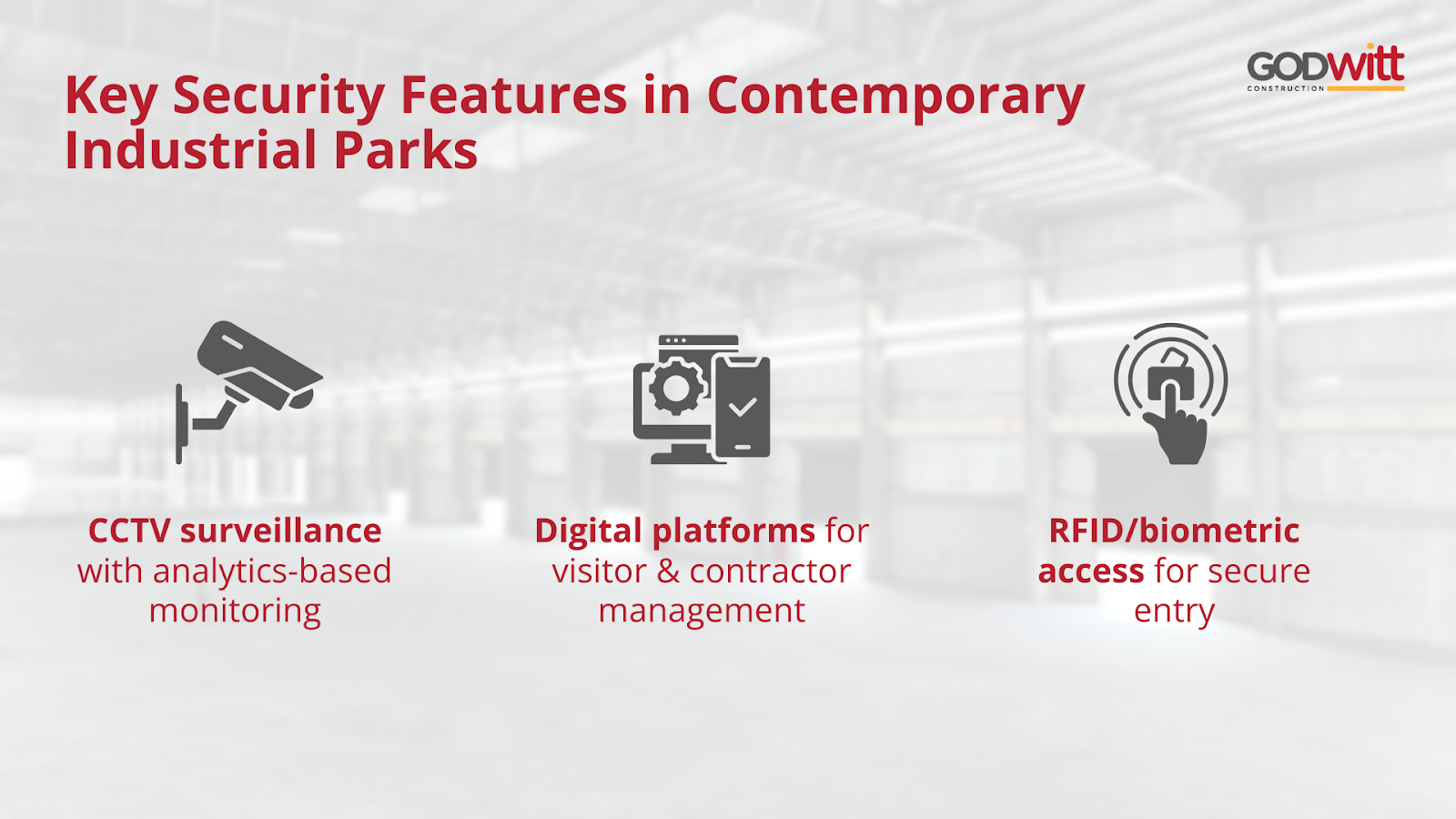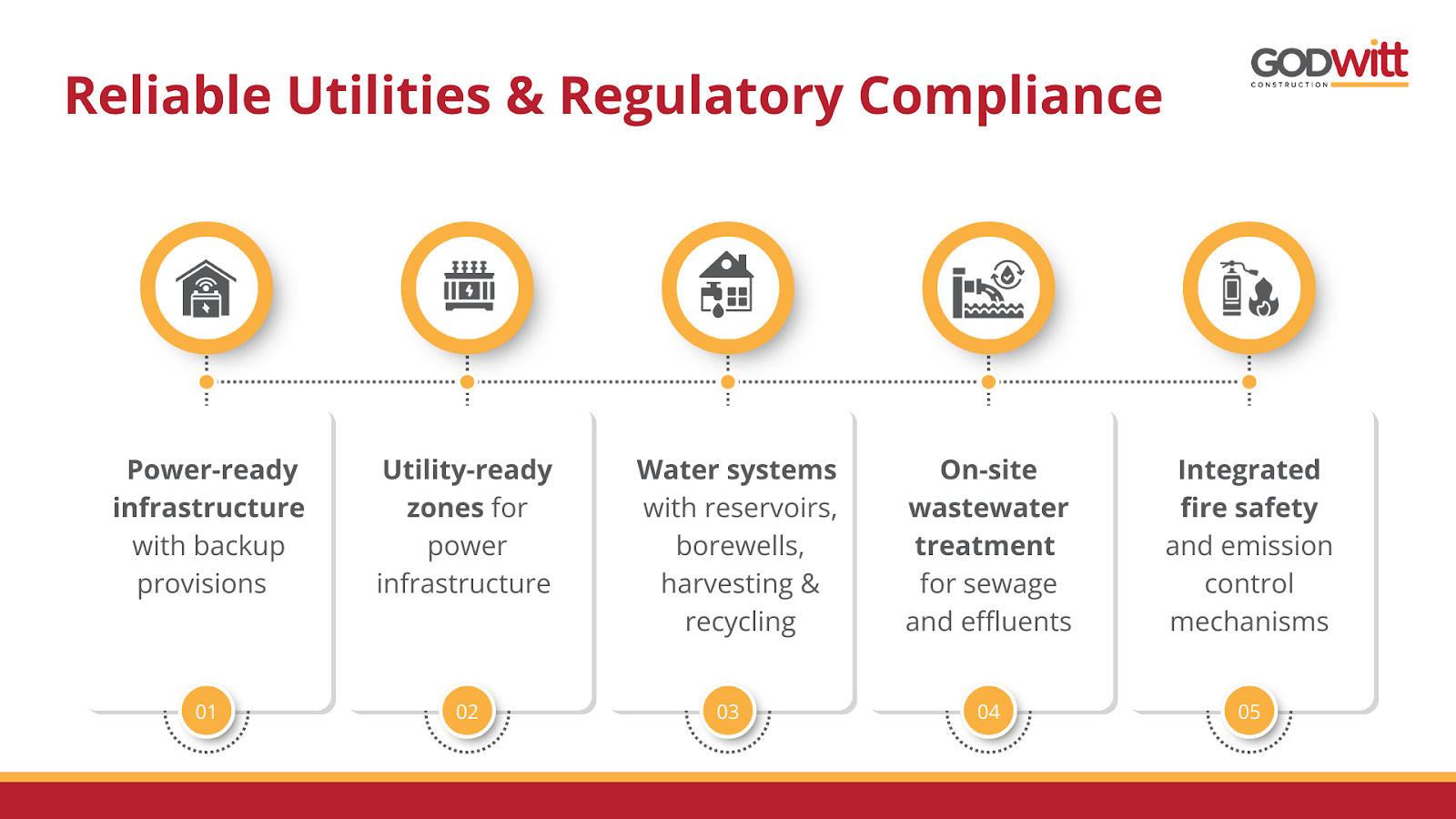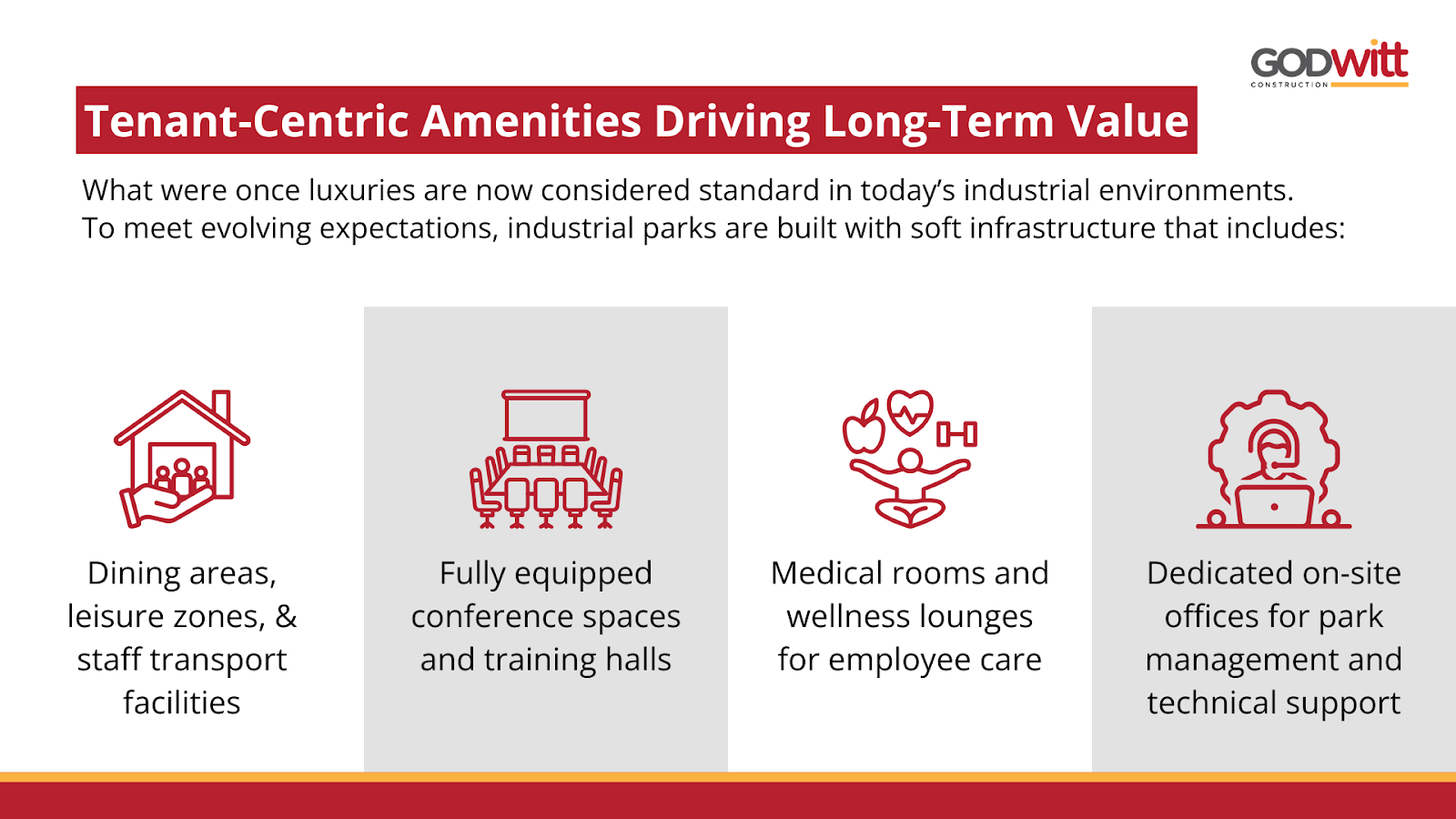Modern Industrial Parks: Common Infrastructure, Local Growth, and What Tenants Want — Security, Scalability & Utility-Ready Spaces

Introduction
The role of an industrial park in today’s economy extends beyond simply offering facilities within a strategic location. Traditionally, industrial parks were designed primarily as land banks for industrial use. Today, however, they are transforming into dynamic hubs of high-efficiency operations focused on inclusive and sustainable industrial development. These parks are not just real estate offerings; they represent a crucial industrial policy instrument in driving economic momentum.
In India, rapid urbanisation, rising demand for manufacturing capacity, and heightened emphasis on environmental compliance have redefined what industrial tenants seek. Competition is fierce, and only those industrial parks that offer advanced infrastructure, integrated utilities, and sustainable practices will stand out.
This article delves into how expectations from industrial park development are evolving and the role of common infrastructure in attracting long-term industrial growth and local economic development.
Understanding the New-Age Industrial Park Tenant
Promoting Industrial Park Development Through Sector Demand
The growing demand across sectors such as logistics, e-commerce,automobile and auto ancillary parts manufactureres, semiconductors and agro-processing has transformed tenant expectations. Industrial tenants no longer evaluate an industrial estate solely on land rates; they seek infrastructure that accelerates deployment, facilitates seamless operations, and aligns with sustainability mandates.
The manufacturing and warehousing sector, in particular, is driving a new wave of industrial park development. Tenants now require intelligent warehousing operations with built-in automation, climate control, and optimized layouts for faster throughput.
For instance, a third-party logistics player (3PL) may look for a warehouse with smart racking systems, IoT-enabled inventory tools, and dock-levelers, all within a strategic park that supports end-to-end operations. Similarly, manufacturers want workspace within a zone that seamlessly scales without moving out of the industrial estate.
For instance, the ‘Soko by Godwitt – Khoda’ project exemplifies this approach, where companies like ASAL and Milan’s Power Coatings have partnered to drive joint solutions and shared value creation
An Eye on ESG: Sustainable Industrial Parks Are in Demand
Sustainability is no longer optional. Businesses with ESG objectives actively look for eco-industrial parks that support clean energy, recycling, and sustainable development.
Sustainable industrial parks incorporate solar panels, energy efficient lighting fixtures, waste segregation systems, rainwater harvesting, and water reuse through sewage treatment plants. Parks that adopt green certifications such as LEED or IGBC signal adherence to global compliance, making them more appealing to foreign investors.
As per studies, over 66 percent of multinational tenants in logistics and manufacturing are willing to pay more for industrial parks that adopt environmentally friendly practices and prioritize the management of industrial parks using modern tech and green strategies.
Physical, Digital, and Operational Security
Providing Common Infrastructure for Safe and Nonstop Operations
Security within an industrial park today goes beyond surveillance. It spans the physical, digital, and operational realms to ensure uninterrupted industrial activities.
Some standard security features in modern industrial parks include:
- Wide-area CCTV surveillance with analytics-based monitoring
- Controlled gated access using RFID or biometric systems
- Centralized platforms for visitor tracking and contractor management

These industrial zones are often geographically delineated and zoned and planned according to a comprehensive plan, ensuring minimal overlap, maximum accountability, and compliance with security expectations.
Designing for Scalability and Customization
Flexible Industrial Infrastructure Encouraging Inclusive Growth
Commercial success in an industrial park depends heavily on scalable, flexible infrastructure. Whether it is a mega food park, cluster park, or eco-industrial zone, modular design is crucial.
The infrastructure and utilities must support business expansion without disrupting operations. For example, dedicated bays can be designed for specialized services such as cold storage or heavy vehicle loading and unloading.
Industrial parks are typically spread across large areas, segmented into functional zones such as logistics, support amenities, and factories. This zoning facilitates strategic planning and ensures the easy availability of space as business needs evolve.
Connectivity as a Foundational Layer
Common Transport and Digital Infrastructure in Industrial Parks in India
Well-connected industrial parks are vital to attracting investment and enabling operational efficiency. Connectivity today includes both physical and digital linkage, providing the ecosystem with robust infrastructure and services.
Physical transport infrastructure must include:
- Close connectivity to a major port, expressways, and railway terminals
- Internal roads with wide turning radii suited for trailers
- Demarcated loading/unloading bays to reduce congestion
Digital connectivity demands:
- Connectivity-enabled infrastructure for occupiers: Planned real estate includes designated cable tranches, allowing tenants to set up their own high-speed internet infrastructure tailored to their operational needs.
- IoT integration systems for modern warehousing operations and production lines
A connected industrial park enhances the flow of goods and data, minimizing delays, maximizing visibility, and ensuring uninterrupted operations.
Reliable Utilities and Compliance
Powering Growth Through Robust Utility Infrastructure
Infrastructure and utilities constitute the core enablers of smooth industrial use. Issues such as water shortages or fluctuating electricity supply can cause significant disruptions in an export processing zone or manufacturing hub.
Facilities and services must therefore include:
- Power-ready infrastructure with backup provisions
- Utility-ready zones for power infrastructure
- Water reservoirs supported by borewells, rainwater harvesting, and recycling plants
- Wastewater treated using in-house sewage and effluent treatment plants
- Fire-safety mechanisms and emissions management built into the core design

Additionally, compliance with zoning laws, building codes, and sector-specific environmental norms supports the speedy launch of tenant operations. Sustainable infrastructure reduces the cost of recurring compliance audits and boosts tenant confidence.
Human-Centric Amenities and Park Management
Tenant-Focused Services for Long-Term Value
Luxuries have evolved into essentials within modern industrial zones. In response, parks are designed to offer soft infrastructure such as:
- Canteens, recreation centers, and transit facilities
- Conference halls and training auditoriums
- First-aid centers and wellness rooms
- On-site management office and maintenance support

Many future-ready industrial parks utilize a centralized digital platform for the management of industrial parks. These platforms consolidate multiple functions such as power consumption analytics, tenant communication, emergency alerts, and billing into one interface, promoting operational efficiency and responsiveness.
Cluster Development and Economic Multiplier Effects
How Industrial Parks Encourage Regional Investment and Inclusive Development
Well-developed cluster-based industrial parks support the co-location of value-chain partners, from raw materials to packaging vendors to logistics firms. This helps reduce transport costs, improve supply chain visibility, and accelerate product-to-market timelines.
Such clustering directly benefits the local economy by:
- Enabling job creation, especially in semi-urban and rural belts
- Fostering skill development by onboarding a skilled workforce
- Strengthening backward and forward linkages across sectors
The co-location strategy also reduces pollution and waste by encouraging industrial symbiosis, where waste from one unit serves as a resource for another.
For example, in a food processing cluster, output waste from a manufacturing unit could be utilized by a nearby composting or biofuel producer.
Industrial parks also contribute to the development of local vendors and ancillary units, fostering inclusive growth. These parks act as launchpads for boosting export capacity, especially when integrated closely with transport corridors and ports.
Examples such as Bangalore’s aerospace park or Singapore’s solar technology park illustrate how industrial parks can become powerful vehicles for economic laws reform, local economic growth, and FDI mobilization.
Conclusion: Rethinking Industrial Park Development
Industrial parks have become central to India's export and industrialization push. But to power the next phase of industrial development, they must evolve into digitally enabled, sustainability-driven, and tenant-focused eco-industrial parks.
Gone are the days when price-per-acre and highway proximity were enough. Today’s tenants need scalable ecosystems that simplify compliance, integrate utility services, and support long-term operational efficiency.
Policy makers and private developers alike need to prioritize infrastructure development that supports job creation, enterprise zones expansion, and foreign direct investment. The development of industrial parks aligned with the ultimate objective of achieving growth and development ensures India remains a global manufacturing and logistics destination.
Whether it’s in special economic zones, free ports, or export processing areas, the creation of industrial and warehouse clusters designed with common facilities and soft infrastructure is essential for the government to attract investment and promote the long-term success of the local economy.

Why to sign up for a newsletter
Open













